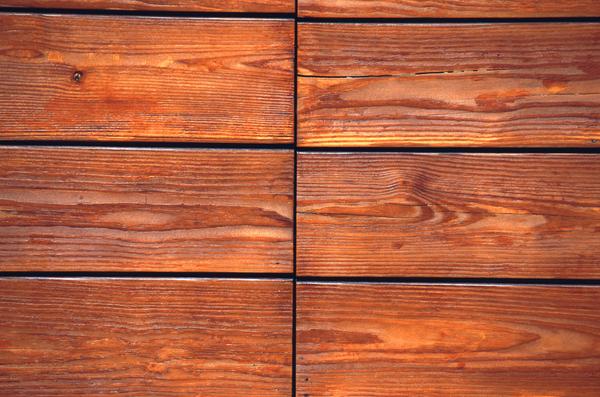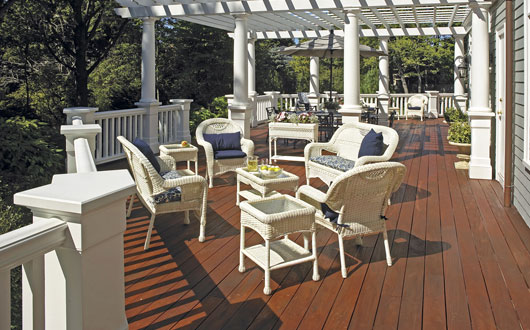 The deck wood surface takes the maximum brunt of the elements and needs to be stained at regular intervals to protect it from damage. With several types of stains and paints available exclusively for outdoor purposes, it becomes very difficult to make a selection. While each type may have its own benefits, a careful consideration of the advantages and drawbacks of each can help you make the right decision.
The deck wood surface takes the maximum brunt of the elements and needs to be stained at regular intervals to protect it from damage. With several types of stains and paints available exclusively for outdoor purposes, it becomes very difficult to make a selection. While each type may have its own benefits, a careful consideration of the advantages and drawbacks of each can help you make the right decision.
Painting vs. Staining a Deck
The first question you might ask is whether you should paint or stain your deck. Generally, staining a deck is better than painting it. Aesthetically speaking, the most obvious reason is that paint totally covers the surface and thereby hides the natural beauty of the wood.
The main difference between the two is that stain penetrates the surface, while paint forms a layer over the surface. This also means that paint is more likely to peel over time. Additionally, because it doesn’t let the wood breathe, there are more chances of cracking or chipping. On the other hand, stains will set off the natural beauty of the wood grain more effectively.
Types of Stains
When it comes to stains, you have a number of choices that offer a varied level of protection:
Ӣ Clear water-based stain: least protection level; however, it exemplifies the grain and natural beauty of the wood. May need to be reapplied every 6 months.
Ӣ Colored water-based stain: lightly pigmented, thus adding a bit of color and vibrancy to the wood without hiding its natural grain.
Ӣ Semi transparent stain: offers much better protection than the colored and clear water stains because it covers the surface more effectively.
Ӣ Oil-based stain: completely covers the surface and protects the surface to the fullest. This type of stain lasts the longest and you are saved from frequent deck staining projects.
Protection

Courtesy of Cabot Stain
How much protection you get from each type of stain can be easily understood. The darker the layer, the better it will cover the surface. It works just like our sunscreen; the more sunscreen we apply, the more we protect our skin. Therefore, clear water-based or silicone-based stains cannot possibly offer sufficient protection. The pigmented stains will better cover the surface, thereby providing a higher level of protection from damage.
The stains we like to use are Cabot stain, Messmer’s deck and siding stain, and Sikkens wood finishes (which allows you to stain decks, siding doors, and windows). These all come in oil or water base. However, remember that when dealing with wood, oil is better because of its ability to penetrate.
Don’t waste your time or money with the big box stores”™ paint or stains, You may save about $5/gallon, but they are cheaper because they use cheap materials and it”™ll last about ¼ of the time.
There is a limit to how long even oil based stains will last. In the intense Colorado climate, it is virtually impossible for the stain to last more than two years if it doesn’t get spoiled before.
The exposure to the sun, ultra-violet rays, and other elements can soon lead to deterioration. We never fail to apply sunscreen again when the day is especially sunny. Similarly, we need to reapply the stain every two years (and occasionally once a year) to keep thedeck free from the ravages of the elements.
If staining a deck is a little overwhelming, or you”™re just not sure how to begin the process, give us a call and we”™ll take care of it for you!
